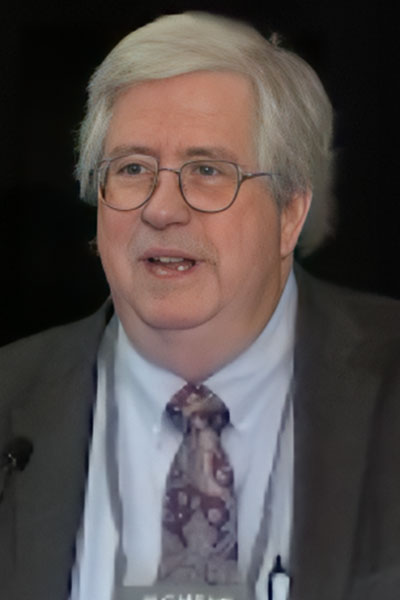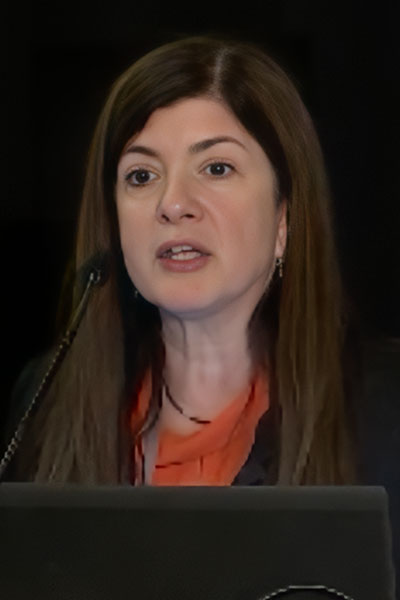
Caring for patients with nontuberculous mycobacteria (NTM) infections can be challenging, but scientists continue to advance the understanding of the disease as well as conversations surrounding nonpharmacologic and pharmacologic approaches to treatment. Experts pulled together recent updates during the 2022 panel, Challenging Care for Nontuberculous Mycobacteria Patient, on Monday, October 17, at CHEST 2022.
David E. Griffith, MD, FCCP, professor of medicine at National Jewish Health, opened the discussion with a review of recently published science from the journal CHEST®, including several papers that focused on amikacin liposome inhalation suspension (ALIS) and Mycobacterium abscessus (M. abscessus).
“Everybody here is interested in ‘does ALIS have activity against abscessus?’” said Dr. Griffith, who outlined one paper on the topic and noted that further data were currently under review for publication.
In breaking down another paper, Dr. Griffith noted that sustainability and durability of culture conversion are two key concepts in NTM treatment. Sustainability refers to negative sputum testing for 12 months while on treatment. Durability refers to negative sputum testing for 12 months after treatment ends. Multiple studies suggest that combining ALIS with other treatment regimens may improve durability.
“The idea of remaining negative after discontinuation of therapy is a big deal,” he said. “At first blush, it looks like adding ALIS to a treatment regimen is going to decrease your chances of having microbiologic recurrence.”
There have been reports of laryngitis after ALIS treatment, he added, but patients generally recover when treatment is stopped. Rechallenge with ALIS does not usually provoke new laryngeal injury.
“We need a good, large, prospective study to settle this question,” he said.

There is a similar need for large, prospective studies to settle questions about nonpharmacologic therapies in NTM. The evidence supports the benefits of airway clearance, hypertonic saline and other mucoactive agents, pulmonary rehabilitation, and other nonpharmacologic strategies, but most studies are small. Studies also support the use of airway clearance for bronchiectasis, but more data are needed.
Airway clearance is an important management strategy, whether using devices or physiotherapy techniques, said Ashwin Basavaraj, MD, FCCP, section chief of pulmonary, critical care, and sleep medicine at Bellevue Hospital Center.
“The goals of airway clearance are to break the vicious cycle, reduce inflammation,” he said. “We want to improve the symptoms of our patients, reduce exacerbations of bronchiectasis, and improve the quality of life of our patients.”
The biggest problem with airway clearance is patient adherence. An analysis of the US Bronchiectasis and NTM Research Registry found that 58% of patients who used airway clearance techniques at baseline were not using them a year later.
“How can we promote adherence?” Dr. Basavaraj asked. “By trialing different airway clearance techniques for patients and trying to figure out what works for them. Reviewing air clearance and education from physiotherapists regularly. And having good social support—having family members constantly reinforce the importance of airway clearance for our patients.”
Good communication is just as important for the success of pharmacologic therapy, added incoming CHEST President, Doreen J. Addrizzo-Harris, MD, FCCP, professor of pulmonary, critical care, and sleep medicine and co-director of the New York University Bronchiectasis and NTM Clinical and Translational Program at New York University Langone Health.

“Success of your treatment regimens is going to depend on the education and close communication that you have with your patient and the patient has with your health care team,” said Dr. Addrizzo-Harris, who also stressed the importance of communication with your lab team, which needs 14-day incubation for antimicrobial susceptibility testing when dealing with M. abscessus isolates.
The latest NTM guidelines, published in 2020, highlight watchful waiting as a reasonable option for many patients. Those with minimal symptoms, stable disease on CT scan, stable pulmonary function studies, less virulent infections such as macrolide-sensitive M. avium complex (MAC), low burden of disease, and minimal comorbidities may be good candidates for watchful waiting.
Patients with significant symptoms; progressive disease; declining pulmonary function; more virulent species such as M. abscessus or macrolide-resistant MAC; smear positive disease; or significant comorbidities such as low BMI, immune suppression, underlying lung disease, or malnutrition are better candidates for active treatment.
Many of the medications used for NTM can cause nausea, but symptoms can often be managed. Anti-emetics may be useful, though QT elongation is a potential side effect. And taking medications at bedtime may allow some patients to sleep through their nausea.
Recurrence is a common problem, Dr. Addrizzo-Harris said. About one-half of patients treated successfully for NTM have positive cultures within 2 years. The problem is distinguishing relapse from reinfection.
“Three-quarters of the patients were new infections,” she noted of data from two studies. “So, think about the environment that your patient is living in.”
Join us at CHEST 2025
Save the date for the next Annual Meeting, October 19 to 22, 2025, in Chicago. CHEST 2025 will explore the latest advancements in pulmonary, critical care, and sleep medicine, with a focus on innovation and the future, just as the city itself embodies progress and reinvention.





